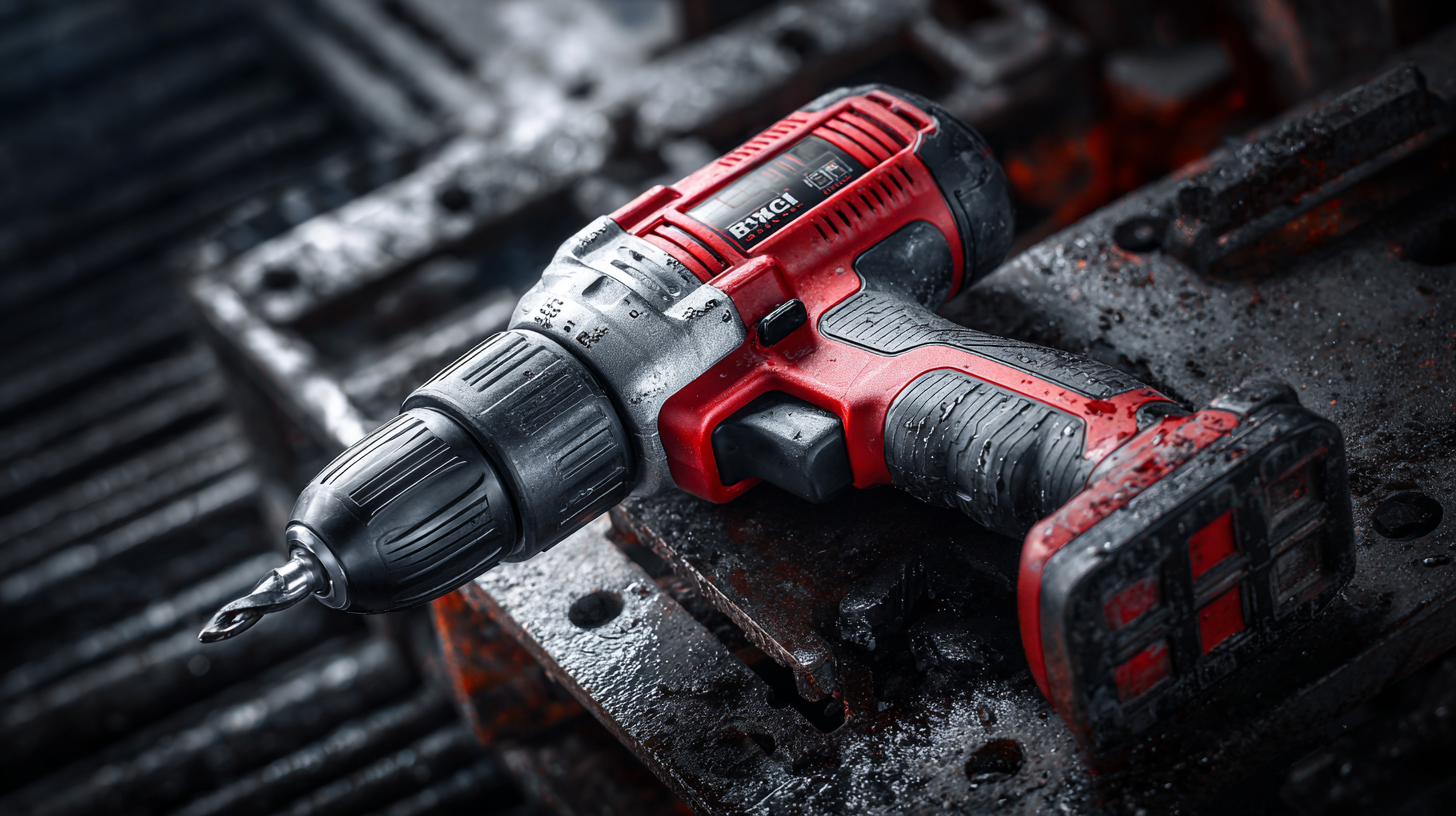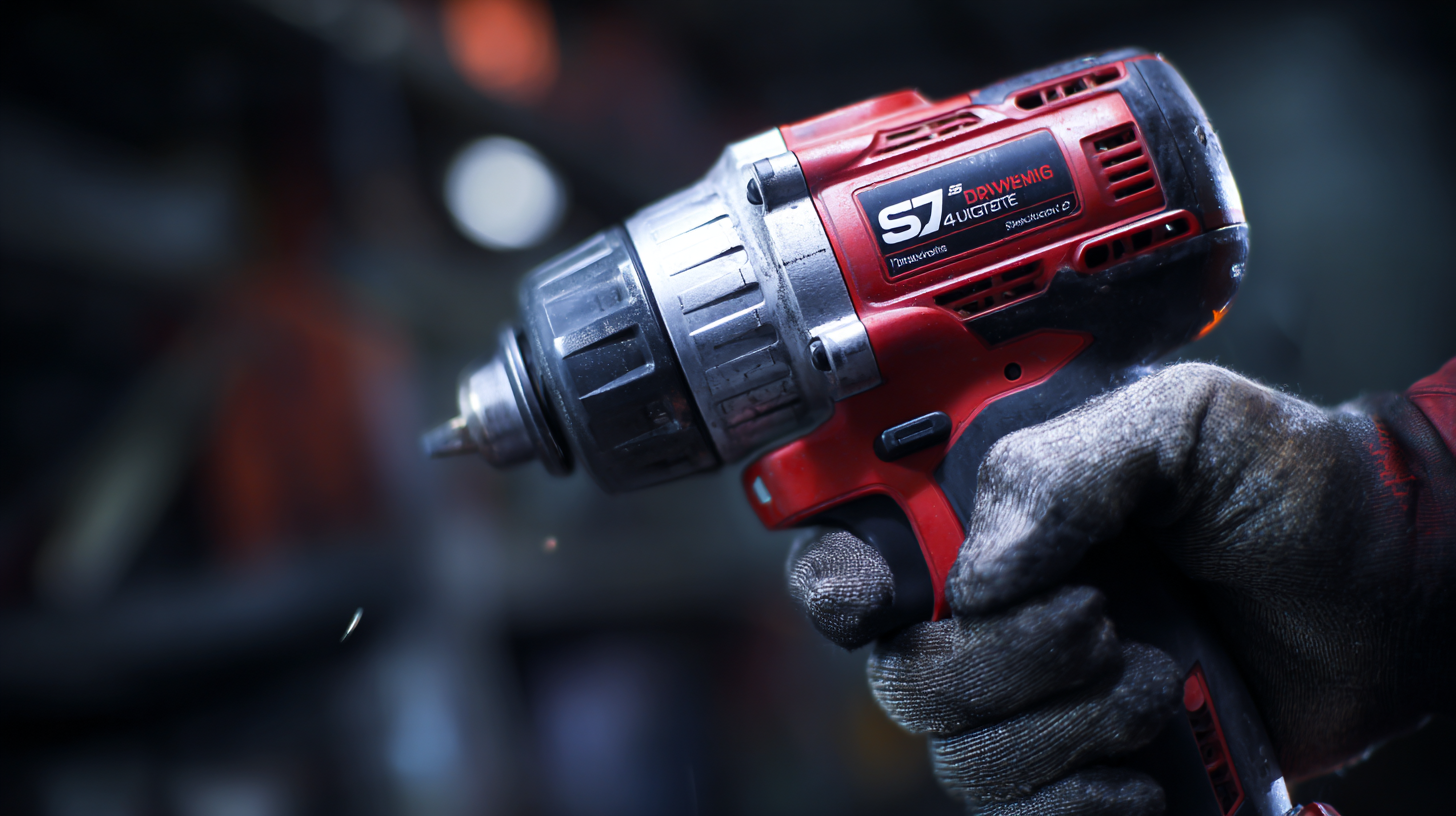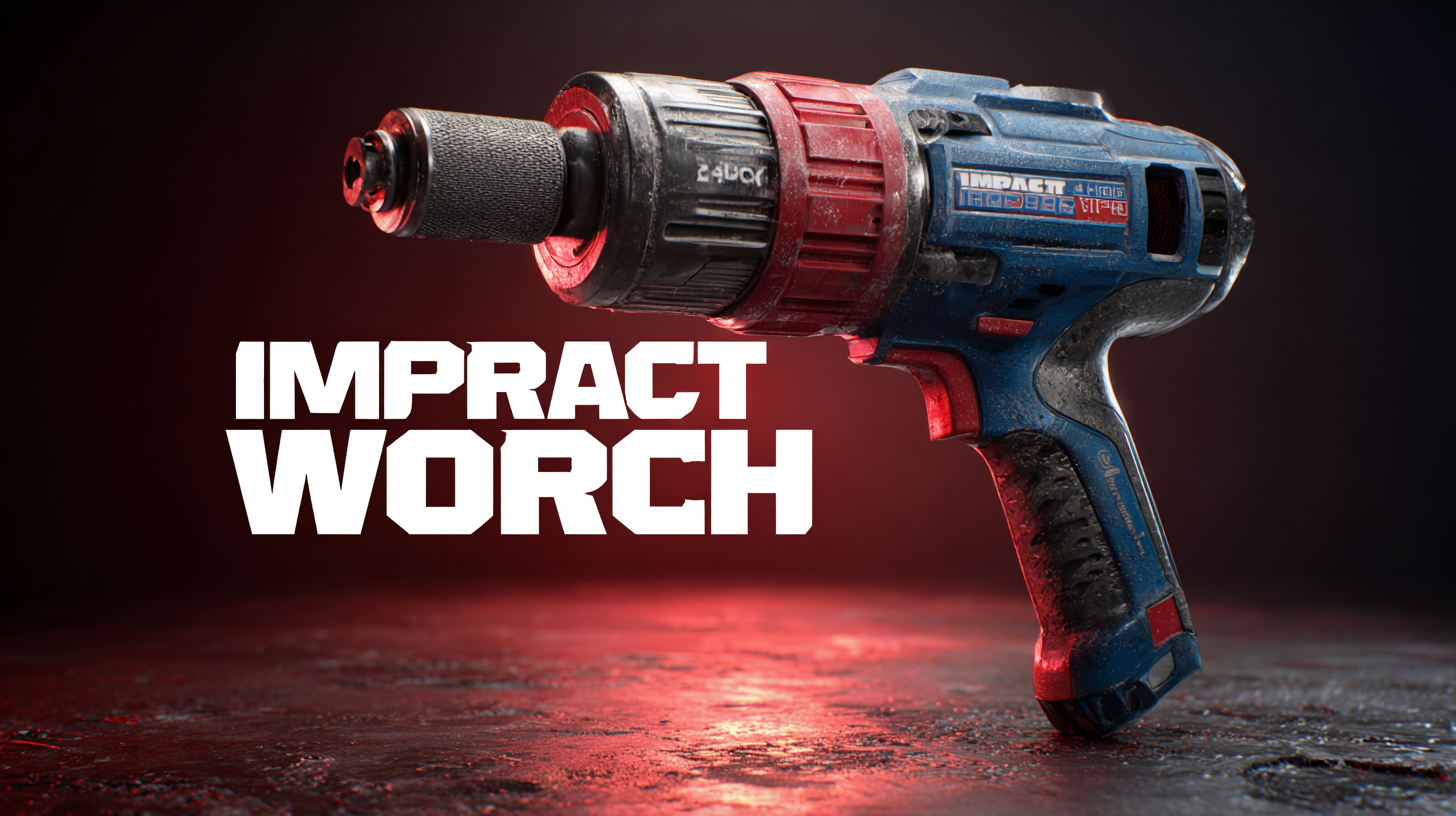
Understanding Industry Standards for the Best Impact Wrench and How to Choose the Right One
In the ever-evolving landscape of tools and machinery, understanding industry standards for impact wrenches is crucial for both professionals and enthusiasts alike. According to a recent report by the Tool Manufacturer’s Association, the global market for power tools, including impact wrenches, is projected to reach $38 billion by 2027, highlighting the increasing demand and innovation in this sector.

Selecting the right impact wrench can significantly affect not only the efficiency of operations but also the overall maintenance costs and after-sales service benefits. By familiarizing oneself with key specifications, user ratings, and industry benchmarks, users can make informed choices that enhance productivity while minimizing repair and operational expenses.
This blog aims to dissect the essentials of impact wrenches and provide a comprehensive guide on how to choose the right one that fits your needs, ensuring optimal performance and cost-effectiveness.
Understanding the Importance of Industry Standards in Impact Wrenches
When selecting an impact wrench, understanding industry standards is crucial for ensuring top performance and safety. These standards set forth guidelines for power, torque output, ergonomics, and durability, enabling consumers to make informed decisions. By adhering to established benchmarks, manufacturers can guarantee that their tools meet specific performance criteria, which can significantly affect efficiency in both professional and DIY projects.
Industry standards also dictate features like noise levels, safety mechanisms, and energy consumption, making them vital for today's environmentally conscious users. Tools that meet these standards are not only more reliable but can also enhance productivity while minimizing risk. For example, a wrench designed with noise reduction in mind will be easier on the ears during prolonged use, contributing to a more comfortable working environment. By prioritizing impact wrenches that comply with these important standards, users can invest in equipment that offers both high performance and sustainability.

Key Features to Look for in a High-Quality Impact Wrench
When choosing a high-quality impact wrench, it's crucial to focus on several key features that can significantly affect performance and durability. According to a recent report by the Industrial and Manufacturing Standards Association, impact wrenches with a torque range of 300-500 ft-lbs are often preferred for both professional and home use due to their balance of power and manageability. Additionally, selecting a wrench equipped with a reliable motor, typically rated at 7-8 amps for electric models, ensures operational efficiency and longevity.
**Tip:** Always check for the impact rate measured in impacts per minute (IPM). Higher IPM ratings, often exceeding 2200 IPM for advanced models, provide faster break loose and fastening capabilities, making tasks smoother and quicker.
Another essential feature is the type of power source. While pneumatic models offer superior performance for heavy-duty tasks, cordless electric wrenches have gained popularity due to their portability and convenience. A study by Tool Review Institute highlighted that battery-powered wrenches with brushless motors demonstrate up to 50% longer run times compared to brushed counterparts, making them ideal for extended use without frequent recharging.
**Tip:** Look for ergonomic designs that enhance grip and control. A lightweight impact wrench with a well-designed handle can significantly reduce user fatigue, improving productivity on the job.
Understanding Industry Standards for Impact Wrench Performance
Comparing Electric vs. Pneumatic Impact Wrenches for Different Applications
When it comes to selecting the right impact wrench for your needs, understanding the differences between electric and pneumatic options is crucial.
 Electric impact wrenches are typically more portable and user-friendly. They can be plugged into any standard outlet, making them a great choice for home projects or light automotive work. Their ease of use means that even beginners can quickly get acquainted with their functionality. However, electric models may lack the raw power needed for more demanding tasks, making them less suitable for heavy-duty applications.
Electric impact wrenches are typically more portable and user-friendly. They can be plugged into any standard outlet, making them a great choice for home projects or light automotive work. Their ease of use means that even beginners can quickly get acquainted with their functionality. However, electric models may lack the raw power needed for more demanding tasks, making them less suitable for heavy-duty applications.
On the other hand, pneumatic impact wrenches are the go-to choice for professional mechanics and heavy industrial use. They require an air compressor, which allows them to deliver significantly higher torque output compared to their electric counterparts. This makes them ideal for loosening stubborn bolts and working on heavy machinery. However, the reliance on an air compressor can limit their portability and convenience in some settings. When choosing between the two, consider your specific application and whether you prioritize portability and ease of use or the raw power and efficiency that pneumatic models provide.
How to Evaluate Brands and Manufacturers for Reliable Performance
Choosing the right impact wrench requires an understanding of the brands and manufacturers that consistently deliver reliable performance. According to a report by the Tool and Equipment Manufacturers Association (TEMA), the top 10% of brands in the industry maintain a failure rate of less than 2%, which signifies their commitment to quality and durability. Many professionals recommend focusing on well-established names like Milwaukee, DeWalt, and Makita, who have a reputation backed by extensive testing and user feedback.
When evaluating brands, consider the warranty and service options. A manufacturer that offers a robust warranty—typically around 3 to 5 years—indicates confidence in the longevity of their tools. It’s also beneficial to read user reviews and performance tests, as these provide real-world insights into reliability and potential pitfalls.
Tips: Always look for independent reviews and check for compliance with industry standards like ISO 9001, which ensures quality management processes. Additionally, compare specifications, such as torque ratings and RPM, to find a model that meets your specific needs. Reliable manufacturers often provide detailed documentation, making it easier to assess performance metrics.
Tips for Selecting the Right Impact Wrench for Your Specific Needs
When selecting the right impact wrench for your specific needs, it is crucial to consider the torque requirements of the tasks you will be performing. Different applications demand varying levels of power. For example, a DIY enthusiast working on home projects may require a lower torque wrench, while a professional mechanic might need a high-torque model for heavy-duty automotive work. Assess the typical jobs you’ll undertake and choose a wrench that can deliver the necessary torque efficiently.
Another important factor is the tool’s power source. Impact wrenches come in three main types: electric corded, electric cordless, and pneumatic. Electric corded models tend to provide consistent power for extended periods, ideal for stationary workstations. Conversely, cordless impact wrenches offer portability, allowing you to maneuver freely without being tethered to a power source. Pneumatic impact wrenches, powered by compressed air, are preferred in professional environments for their lightweight design and high power output. Consider your work environment and the convenience each type offers, ensuring that you select an impact wrench that complements your workflow and enhances productivity.
Understanding Industry Standards for the Best Impact Wrench and How to Choose the Right One
| Specification | Value | Importance |
|---|---|---|
| Torque Output | Up to 2000 ft-lbs | Essential for loosening tight fasteners |
| Drive Size | ½ inch | Common size for automotive applications |
| Weight | 7.5 lbs | Balance between durability and ease of use |
| Power Source | Cordless electric | Flexibility and portability |
| Max RPM | 2200 RPM | Speeds up fastening tasks |
| Noise Level | 85 dB | Consider for user comfort |
| Warranty | 3 years | Reflects quality and reliability |
